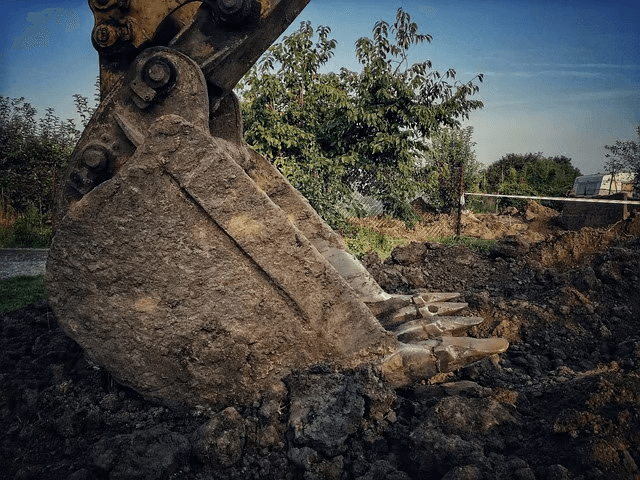
Detention ponds are a crucial component of stormwater management systems, designed to capture and slow down the flow of rainwater runoff to prevent erosion, sedimentation, and pollution of waterways. These ponds are often overlooked, but they require regular maintenance to ensure they continue to function effectively. In this article, we'll explore the importance of detention pond maintenance Greenville SC and provide guidance on how to keep these vital systems in top shape.
1. What is a Detention Pond?
A detention pond, also known as a stormwater detention basin, is a man-made pond designed to capture and store stormwater runoff during heavy rainfall events. The pond's design allows the water to slowly infiltrate the soil, reducing the risk of erosion and sedimentation downstream. Detention ponds are typically located near urban areas, where the impermeable surfaces of roads, buildings, and parking lots increase the volume and speed of stormwater runoff.
2. Why is Detention Pond Maintenance Important?
Regular maintenance is essential to ensure detention ponds continue to function effectively. Without proper maintenance, detention ponds can become clogged with debris, sediment, and vegetation, reducing their ability to capture and store stormwater runoff. This can lead to a range of problems, including:
* Increased risk of flooding and erosion
* Reduced water quality
* Increased maintenance costs
* Potential environmental and health hazards
3. Types of Maintenance
Detention pond maintenance involves a range of activities, including:
* Sediment removal: Regular removal of sediment and debris from the pond's bottom and sides is crucial to maintain water flow and prevent clogging.
* Vegetation management: Vegetation can grow in and around the pond, reducing its effectiveness. Regular trimming and removal of vegetation is necessary to maintain the pond's design and functionality.
* Debris removal: Debris, such as trash and branches, can accumulate in the pond and reduce its ability to capture and store stormwater runoff. Regular removal of debris is essential.
* Water quality monitoring: Regular monitoring of water quality is necessary to ensure the pond is not contributing to water pollution.
* Structural inspections: Regular inspections of the pond's structure, including the dam and outlet, are necessary to ensure they remain safe and functional.
4. How to Perform Maintenance
Performing maintenance on a detention pond requires careful planning and execution. Here are some tips to help you get started:
* Develop a maintenance plan: Create a schedule outlining the frequency and scope of maintenance activities.
* Identify potential hazards: Be aware of potential hazards, such as steep slopes, deep water, and heavy equipment, and take necessary precautions to ensure safety.
* Use the right equipment: Use the right equipment, such as sediment removal tools and vegetation trimmers, to perform maintenance activities efficiently and effectively.
* Monitor water quality: Regularly monitor water quality to ensure the pond is not contributing to water pollution.
5. Benefits of Proper Maintenance
Proper maintenance of detention ponds offers a range of benefits, including:
* Reduced risk of flooding and erosion
* Improved water quality
* Reduced maintenance costs
* Extended lifespan of the pond
* Protection of the environment and public health
6. Challenges of Detention Pond Maintenance
Detention pond maintenance can be challenging, particularly in areas with limited access or difficult terrain. Some common challenges include:
* Limited access: Detention ponds may be located in remote or hard-to-reach areas, making it difficult to perform maintenance activities.
* Difficult terrain: Detention ponds may be located in areas with steep slopes or other challenging terrain, making it difficult to perform maintenance activities safely.
* Limited resources: Detention ponds may require significant resources, including equipment, personnel, and funding, to perform maintenance activities.
7. Best Practices for Maintenance
To ensure effective detention pond maintenance, follow these best practices:
* Develop a comprehensive maintenance plan
* Identify potential hazards and take necessary precautions
* Use the right equipment and personnel
* Monitor water quality and adjust maintenance activities as necessary
* Regularly inspect the pond's structure and make repairs as needed
8. Conclusion
Detention ponds are a vital component of stormwater management systems, and regular maintenance is essential to ensure they continue to function effectively. By understanding the importance of detention pond maintenance, identifying potential challenges, and following best practices, you can help protect the environment, public health, and property. Remember, regular maintenance is key to keeping these unsung heroes of stormwater management in top shape.
9. Future of Detention Pond Maintenance
As urban areas continue to grow and develop, the importance of detention pond maintenance will only continue to increase. With the increasing threat of climate change, it's more important than ever to ensure these vital systems are functioning effectively. As technology continues to evolve, we can expect to see new and innovative approaches to detention pond maintenance, including the use of drones, sensors, and other advanced technologies. By staying ahead of the curve and adapting to changing circumstances, we can ensure the continued effectiveness of detention ponds and protect the environment and public health for generations to come.